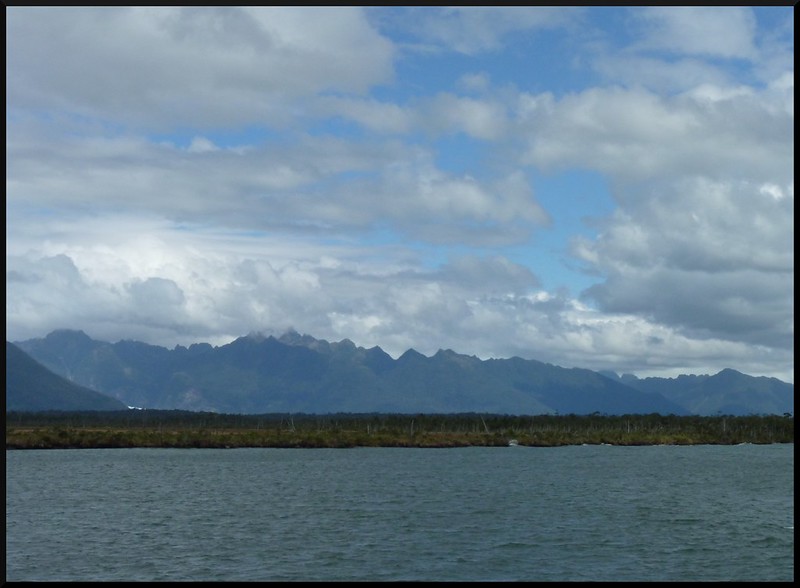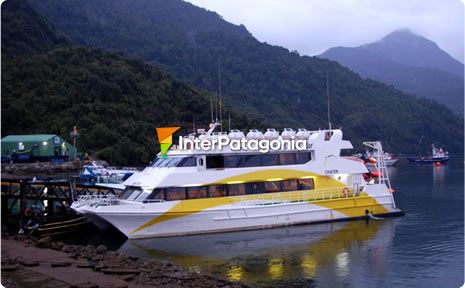
A trip on the Carretera Austral is incomplete without visiting the San Raphael Glacier. The San Rafael glacier begins at 13,310 feet above sea level which is the highest peak in the southern Andean mountain range.
We arrived in Chacabuco, around sunset. We are staying for 3 days at the largest and most enjoyable hotel in the region, the Los Loberias Del Sur Hotel.
It had lovely views
out to the Aysen Sound and the Chacabuco port itself.
The hotel is one of the few operations that provide excursions and catamaran services to see the Ventisquero San Rafael (the San Raphael Glacier) that is one of the highlights of this entire Patagonia region.
So, the following morning, we boarded the Los Loberias Del Sur cameraman
and headed out to the Laguna San Rafael and on towards the San Rafael Glacier. We saw blue ice floating in the Lagona. Why is the ice blue, you might ask?
We learned from our guide, "The pressure caused by the sheer volume of ice squeezes the air bubbles out of the snow as it is absorbed into the glacier. Because compacted ice better absorbs light at the red end of the spectrum, the light reflected from the glacier appears surprisingly blue."
We passed thru the amazing Laguna San Rafael which is not a lake nor lagoon at all for it is connected to the open ocean, but due to the formation of the mountains around the "lake" it appears to be an enclosed body of water.
There were enormous icebergs floating on the Laguna San Rafael and the captain of our catamaran did a masterful job avoiding them. Many were massive!
Then we saw it! The magnificent San Rafael Glacier!
We donned our life jackets and were ready to go.
Twelve of us set out in our zodiac and headed right up to it for a closer look.

Perhaps because we were at sea level looking up and so close to the glacier, that the San Rafael glacier struck us as being exceptionally impressive.

Suddenly, we heard a deafening roar of the glacier calving. Right before our eyes we witnessed a gigantic block of glacial ice, about the size of a 150 foot building, come crashing into the water with a thunderous BOOM!
It looked like an explosion when it hit the water.

Then just as we thought it was all underwater,

the massive block of ice thrust itself upward to the surface as if it was a whale breaching and then smacked onto its side causing another explosion of water.

The blue ice then rolled over and over onto its side until the heaviest portion of it was below the surface of the water.
It was an astounding sight to behold!
Then we saw the huge waves from the explosive force of the calfing headed in our direction and our guide yelled,
"Hold on!" We did.

The zodiac's motor roared to life and we raced back to the ship.

It had been wet and cold on the zodiacs and the cameraman was filled with warm food and "welcome back!" drinks awaiting our return.
Between one's choice of a pisco sour or Chilean wine, the excursion also offered a wonderful whiskey with millenary ice that dates back more than 20,000 years. It was pretty impressive how the ice cube chunks didn't melt!
In a short while we headed for home.

And while our 10 hour trip was ending, we were filled with the memory of such an extraordinary and breathless sight to see this gigantic chunk of ice split off of its brilliant blue sides and thunderously crash into the lagoon.
Cheers! to another exceptional memory of our time in Chile!

























